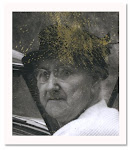For the past few days I've been featuring slides from the Betty Schnabel estate taken by either Betty or her father, Donald, in Madrid in February 1956. These are part of the photo collection I purchased last year. Thousands of slides…seriously, thousands for less than 2 cents a slide. It will take me years to go through all of them.
For the first few posts I asked if any readers knew the locations, and if so to please let me know. Mike Brubaker and Intense Guy both stepped forward to educate me.
Cibeles Palace
Monumento a los Caídos por España
Well, this time I'm starting off with one I was able to research myself thanks to having enough sense to type "garden maze madrid" into Google.
 Click on image to see it larger.
The Sabatini Gardens
Click on image to see it larger.
The Sabatini Gardens
The Sabatini Gardens (in Spanish: Jardines de Sabatini) are part of the Royal Palace in Madrid, Spain, and were opened to the public by King Juan Carlos I in 1978. They honor the name of Francesco Sabatini (1722–1797), an Italian architect of the 18th century who designed, among other works at the palace, the royal stables of the palace, previously located at this site.
In 1933, clearing of the stable buildings was begun, and construction of the gardens begun, which were only completed in the late 1970s. The gardens have a formal Neoclassic style, consisting of well-sheared hedges, in symmetric geometrical patterns, adorned with a pool, statues and fountains, with trees also disposed in a symmetrical geometric shape. The statues are those of Spanish kings, not intended originally to even grace a garden, but originally crowding the adjacent palace. The tranquil array is a peaceful corner from which to view the palace. (Source: Wikipedia)
I'm really drawn to this place. I keep thinking it would have been a good set for an old episode of the tv show The Avengers or maybe an old Bond movie. There's something surreal about the place, especially with the pond drained of water.
Now we move on to the next shot. I haven't a clue other than it's also in Madrid. Put on your thinking caps and let me know what we're looking at.
 Click on image to see it larger.
Click on image to see it larger.
UPDATE: Thanks to
Intense Guy this has now been identified as the Royal Palace of Madrid. You can read about it
here.
And finally we head out of Madrid and on the road to…I'm really not sure. I can tell you this fellas name is Bill, but then things get weird. It says "Papraga, El Escorial, Spain." I find "El Escorial" at Wikipedia, but nothing about a place called "Papraga." Google keeps trying to convince me I really want "paprika" and I'm just as willing to convince them that I don't want that because I hate paprika.
 Click on image to see it larger.
Click on image to see it larger.
But moving forward with Bill…we are heading to El Escorial. In the distance, to the left of Bill's hat, you can see the
Royal Site of San Lorenzo de El Escoria.
The Royal Site of San Lorenzo de El Escorial is a historical residence of the King of Spain, in the town of San Lorenzo de El Escorial, about 45 kilometres (28 mi) northwest of the capital, Madrid, in Spain. It is one of the Spanish royal sites and functions as a monastery, royal palace, museum, and school. There is another town, 2.06 km further down the valley (4.1 km road distance), called 'El Escorial'.
The Escorial comprises two architectural complexes of great historical and cultural significance: the royal monastery itself and La Granjilla de La Fresneda, a royal hunting lodge and monastic retreat about five kilometres away. These sites have a dual nature; that is to say, during the 16th and 17th centuries, they were places in which the power of the Spanish monarchy and the ecclesiastical predominance of the Roman Catholic religion in Spain found a common architectural manifestation. El Escorial was, at once, a monastery and a Spanish royal palace. Originally a property of the Hieronymite monks, it is now a monastery of the Order of Saint Augustine. (Source: Wikipedia)
Click on the link to actually see a photo of what we're heading to.
And I thought I'd Google "Bill" to see what shows up. For your viewing pleasure…
Bill at Wikipedia. Not OUR Bill, just a bunch of links to bill and Bill.
This is actually my submission for
Sepia Saturday this week and it's way off theme. The only way to tie it to the theme would be postcards > travel > slides. Thin, very thin. Grabbing at straws really. Thin straws.
Seriously, imagine sitting in the living room of the Schnabel home in 1956 watching their vacation slide show. Hours of it. Here you only have to do it in small doses.



























